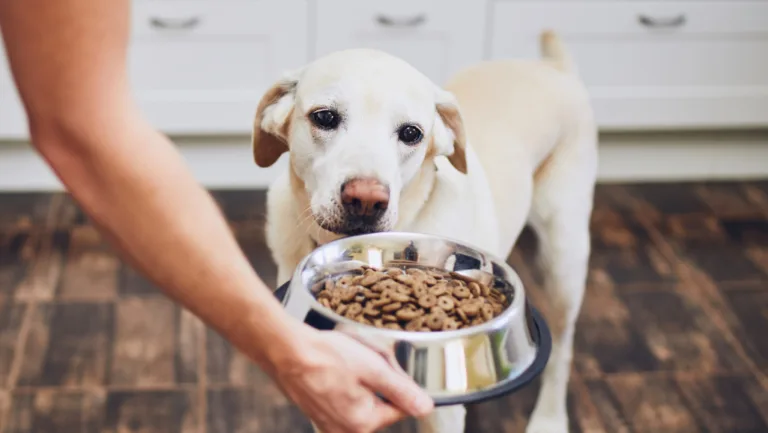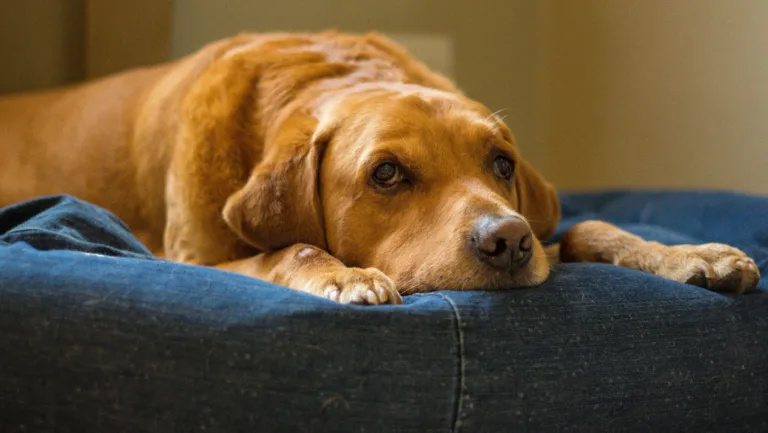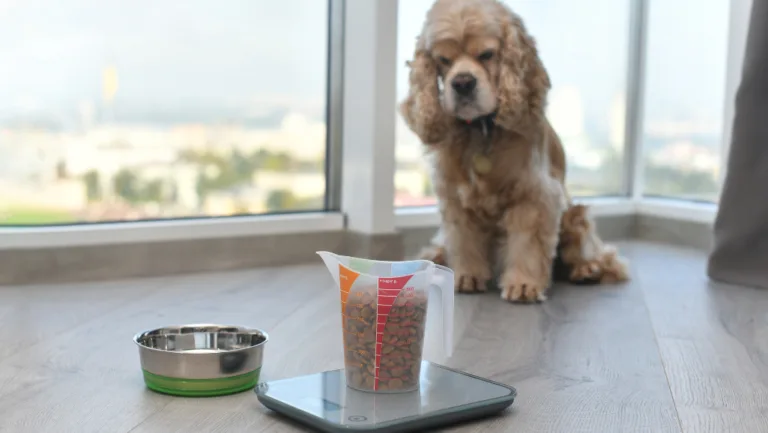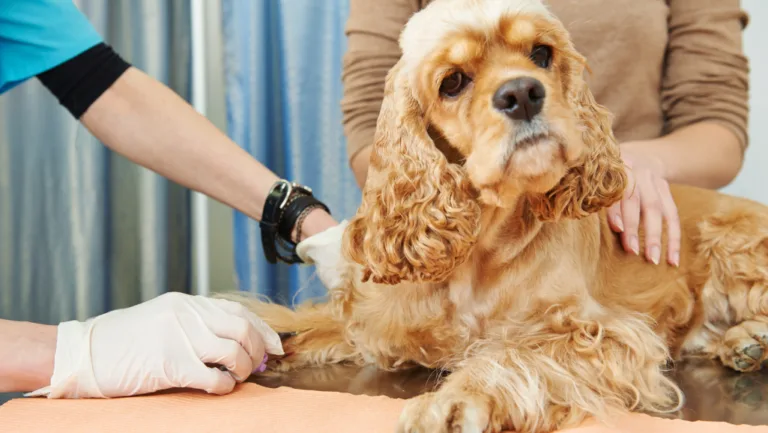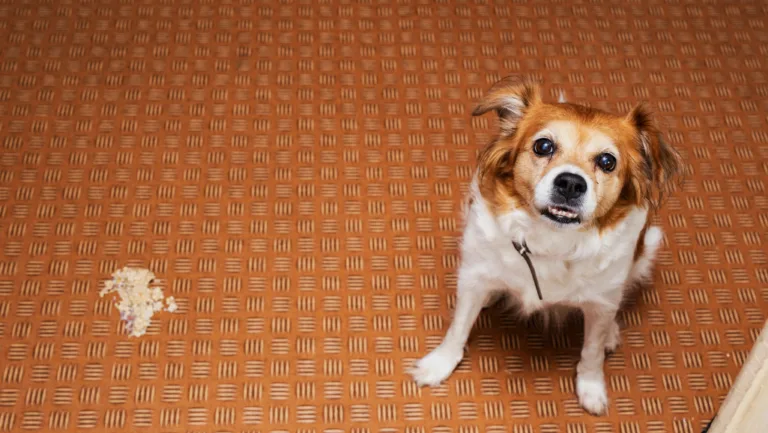Bringing a furry friend home is exciting but comes with big responsibilities. One key part is giving your dog a comfy, safe spot of their own. Indoor dog crates are a great way to make a cozy spot for your pup that also fits your home’s style.
Teaching your dog to use a crate is a smart way to house train, keep them safe, and make travel easier. If you start it right, most dogs will love their crate. It’s important to make the crate a positive place and never punish them in it.
Picking the right crate size and style is key for your dog’s happiness. The crate should let your dog stand, turn, and lie down easily. You can choose from wire, plastic, or soft-sided crates, each with its own perks. Soft-sided crates are great for dogs that don’t chew and are easy to carry.
Think carefully about where to put your dog crate in your home. Look at how close it is to family activities, if it’s in a cool spot, and if it’s easy to get to. By picking the right spot and making the crate part of your home’s look, you can make a space that works well and looks good too.
Key Takeaways
- Create a Cozy Home with Stylish dog crate in house.
- Crate training is good for house training, keeping your dog safe, and travel.
- Choose the right size and style of crate based on your dog’s needs and preferences.
- Select a suitable location for the crate that ensures your dog’s comfort and integrates with your home’s decor.
- Make the crate a positive experience by providing cozy bedding, toys, and treats.
- Consider DIY projects or stylish pre-made crates to seamlessly blend the crate into your home’s aesthetic.
Benefits of Using a Dog Crate in Your Home
Adding a dog crate to your home brings many benefits for you and your dog. Veterinarians, trainers, and breeders all agree that crate training is key. It helps your dog behave well and stay happy. Let’s look at the main advantages of having a dog crate at home.
Facilitates House Training
Housebreaking puppies is easier with crate training. Dogs don’t like to mess where they sleep. A crate gives your puppy a cozy spot to hold their bladder and bowels until you take them outside.
Being consistent and positive during crate training helps your puppy learn fast. This makes housebreaking quicker and easier.
Provides a Safe Haven
A dog crate is a safe and cozy spot for your dog. It’s like their own den, giving them a sense of security. This is great for anxious dogs, as it makes them feel safe in a smaller space.
It also stops destructive behavior and keeps your dog safe from dangers when you’re not watching.
Aids in Travel and Transportation
Getting your dog used to a travel crate is key for safe trips. Whether it’s a road trip, flight, or vet visit, a crate-trained dog is calmer and easier to handle. This is especially true for hunting dogs, who need a safe and comfortable place during hunts and travel.
Start getting your dog used to the crate early. This way, they’ll associate it with good times, making trips more fun for everyone.
Crate training is good for all dogs, not just puppies. It prepares them for emergencies, disasters, or temporary homes. A crate-trained dog handles these situations better, with less stress.
Using a dog crate and crate training helps your dog adjust well. It makes house training easier, provides a safe space, and helps with travel. The benefits of a dog crate in your home are clear. Start crate training to make your dog’s life better and more secure.
Choosing the Right Size and Style of Dog Crate
Choosing the right dog crate is key for your pet’s comfort. A crate that fits well can greatly improve your dog’s behavior and happiness. It’s important to pick a crate that feels like a cozy home for your dog.
Determining the Appropriate Size
Make sure your dog can stand, turn, and lie down in the crate. A dog crate size guide can help find the perfect size. For example, a small crate is good for dogs up to 6 pounds. A bigger crate is needed for larger dogs, up to 110 pounds.
For growing puppies, choose a larger crate with dividers. This way, you can adjust the size as your puppy grows. It ensures they always have enough room.
Wire Crates vs. Plastic Crates
Wire and plastic crates are popular for indoor use. A survey shows 42% of owners like metal crates for their strength and air flow. Wire dog crates are great for homes because they let in air and let your pet see outside. Plastic dog crates are light and cozy, but they don’t breathe as well as wire crates.
Soft-Sided Crates for Specific Needs
Soft-sided crates are perfect for travel or when you’re not home. They’re easy to carry and fold up for storage. They’re also good for dogs who like a snug space. But, they might not be the best for dogs who chew a lot or need a strong crate.
When selecting a crate, prioritize your dog’s comfort and safety. A well-chosen crate will provide a secure and cozy retreat for your furry friend, making them feel right at home.
Selecting the Perfect Location for Your Dog Crate in House
Choosing the right spot for your dog’s crate is key when crate-training puppies. It should feel safe and comfy, like a cozy den. Think about your dog’s personality, daily life, and your home’s layout to find the best spot.
Many people put their dog’s crate in the bedroom. This is great because it’s close to you at night. It makes housebreaking easier and helps with separation anxiety. Being near you also strengthens your bond, like a pack.
In your bedroom, place the crate near your bed or the door. This makes your dog feel safe and lets them see what’s happening. But, watch out for lighting, temperature, and foot traffic to keep them comfy and safe. Don’t put the crate near heaters or in the sun, as it can get too hot.
The living room is another excellent location for your dog’s crate, as it allows them to feel like part of the family while still having their own designated space.
For the living room, pick a spot that’s both social and quiet. A corner near the couch or a quiet area works well. Make sure the crate fits well in your living space without blocking anything or being a safety risk.
You could also consider the kitchen, laundry room, or a pet room if you have the space. Each spot has its own advantages and disadvantages. Think about what’s best for your dog and your home.
Whatever spot you choose, make sure the crate is comfy and safe. Add soft bedding, a favorite toy, or a piece of your clothing to make it cozy. This will help your dog feel at home in their crate.
The goal is to make the crate a happy, safe place for your dog. By picking the right spot and making it cozy, you’ll help your dog love their crate as their own special den in your home.
Essential Accessories for a Comfortable Crate
To make your dog’s pet crate for inside cozy, add the right accessories. Plush bedding and fun toys can turn it into a comfy spot for your dog.
Cozy Bedding Options
A comfy bed or mat is key for your dog’s crate. Think about what your dog likes and needs. Some dogs might chew on their bedding, which can be bad.
But, many dogs love soft, plush beds. The PetPlay Chill Pad Mat ($35) or the Brindle Waterproof Memory Foam Bed ($49.99 – $40.49) are great choices. They’re comfy and last a long time.
Water and Food Bowls
It’s best not to leave food out in a dog crate. But, fresh water is a must. Pick a bowl that won’t spill and fits well in the crate.
Watch how much water your dog drinks. This depends on their age, training, and health. Puppies might need water more often.
Stimulating Toys and Chews
Keep your dog happy and busy with toys in their crate. Puzzle toys, like the Pet Zone IQ treat ball ($14.99), are great. They challenge your dog and reward them with treats.
Chew toys, like the KONG Extreme Goodie Bone ($13.99), are also good. You can fill them with peanut butter and freeze them for a long-lasting treat.
When picking toys for your dog’s crate, think about their size and chewing habits. Some toys, like plush ones with stuffing, can be dangerous if swallowed.
Choosing the right accessories for your dog’s crate makes it a safe and happy place. A well-equipped crate keeps your dog comfy and healthy.
Decorating and Integrating Your Dog’s Crate into Your Home Decor
Finding ways to make your dog’s indoor dog kennel part of your home’s look can be fun. With a bit of creativity and DIY skills, you can turn a basic dog crate for indoor use into something stylish. It will not only look good but also be a cozy spot for your dog.
Crate Covers and Slipcovers
Using a crate cover or slipcover is a simple way to make a portable dog crate look better. These covers come in many colors, patterns, and materials. They help your crate blend in with your home’s style. A good slipcover can make a wire or plastic crate look like a side table, hiding its practical use while keeping it useful as a canine enclosure.
When picking a cover, make sure it lets air in and watch your dog to avoid them getting too hot.
Creating a Crate End Table or Side Table
If you like DIY projects, turning a heavy-duty dog crate into a table is a fun project. Build a wooden frame around the crate and add a top. This makes a unique dog home furniture piece that’s good for both you and your dog. It’s great for smaller crates, as it saves space and keeps your dog nearby.
Building a Custom Crate Furniture Piece
For a lasting solution, think about making your dog’s crate part of a custom piece of furniture. You could have a kitchen island with a dog cage kennel or a window seat with a puppy training crate. The options are endless. Work with a carpenter or do it yourself to make a special indoor pet containment piece that fits your home’s style. Remember to make sure your dog is comfortable and safe by ensuring good air flow, easy access, and secure design.
By using these creative ideas, you can make your dog’s crate a stylish and useful part of your home. Your dog will have a cozy place to relax, and you’ll have a home that looks great and meets both human and dog needs.
Conclusion
Creating a cozy space for your furry friend is key to being a good pet owner. You can choose from wire, plastic, or soft-sided crates to fit your home. Make sure the crate is the right size, well-ventilated, and comfy.
Add soft bedding, fun toys, and fresh water to make it inviting. Crate training takes time and patience. Start by using treats and feeding meals inside the crate.
Gradually increase how long your dog stays in the crate. A consistent routine, including exercise and potty breaks, is crucial. This article explains how crate training helps with house training and keeps your dog safe during travel or vet visits.
Investing in a cozy home for your pup will make them happy and secure. A well-designed crate is not just a dog room accessory. It’s a place of comfort and security for your dog. With a little creativity and effort, your dog’s crate will become a beloved part of your home.







